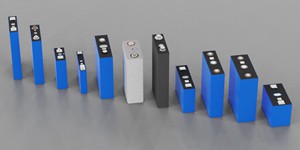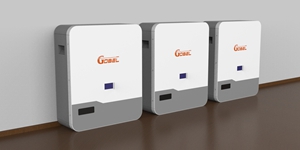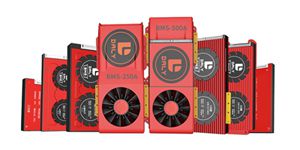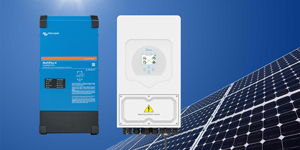BUILD A LITHIUM ION BATTERY
Lithium Battery Supplier-
Gobel Power LiFePO4 Battery Case DIY Kit with 16pcs EVE 314Ah Cells
Ship from China US$1,453.50
-
Germany warehouse Gobel Power 51.2V 100Ah GP-SR3-PC100 LiFePO4 Server Rack Battery
Ship from China US$1,319.90
-
EV Grade A EVE 3.2V 280Ah Rechargeable LiFePO4 Battery Cell
Ship from China Get Price
-
JKBMS Inverter BMS JK-PB1A16S-10P 100A BMS with Active Balancer Bluetooth
Ship from China US$99.00
-
REPT 3.2V 392Ah LiFePO4 Energy Storage Battery Cell
Ship from China Get Price
-
REPT 3.2V 345Ah LiFePO4 Energy Storage Battery Cell
Ship from China Get Price
-
EU Stock 48V 16S LiFePO4 Battery Pack DIY Kit Case with JK BMS
Free Shipping 5% OFF Ship from China US$639.00
-
Gobel Power 51.2V 600Ah 30kWh Server Rack LiFePO4 Battery
Ship from China Get Price
-
12V 280Ah LiFePO4 Battery GP-LA12-280AH Standard Deep Cycle Battery 3.5kWh Energy
Ship from China US$358.00
-
Gobel Power DIY Kit 51.2V 314Ah 280Ah Battery Case Kit with BMS Circuit Breaker
Ship from China US$458.00
-
EV Grade A+ EVE 3.2V 280Ah Rechargeable LiFePO4 Battery Cell
Ship from China US$57.10
-
Gotion 340Ah LiFePO4 Lithium Battery Cell
Ship from China US$86.00
-
CATL 3.2V 120Ah LiFePO4 Lithium Battery Cell
Ship from China Get Price
-
CATL 3.2V 240Ah LiFePO4 Lithium Battery Cell
Ship from China Get Price
-
CATL 3.2V 271Ah LiFePO4 Lithium Battery Cell
Ship from China Get Price
-
CALB 3.2V 100Ah LiFePO4 Lithium Battery Cell Wholesale
Ship from China Get Price
-
GanFeng 3.2V 100Ah LiFePO4 Lithium Battery Cell Wholesale
Ship from China Get Price
-
HiGee 3.2V 120Ah LiFePO4 Lithium Battery Cell Supplier
Ship from China Get Price
-
HiStar 3.2V 100Ah LiFePO4 Lithium Battery Cell Distributor
Ship from China Get Price
-
Gobel Power 48V 100Ah LiFePO4 Server Rack Battery
Ship from China Get Price
-
High Grade EVE 3.2V 100Ah LF100LA Rechargeable LiFePO4 Battery Cell
Ship from China US$28.87
-
Solution LiFePO4 Battery Cell -
Solution Lithium Battery Charger
Build a Lithium-Ion Battery: A Comprehensive Guide In today's world, lithium-ion batteries have become an integral part of our daily lives, powering everything from our smartphones to our electric vehicles. But have you ever wondered how these batteries are built and what makes them so efficient? If yes, then you're in the right place! In this article, we'll take you through a step-by-step guide on how to build a lithium-ion battery. Principle and Components: A lithium-ion battery consists of three main components: a positive cathode, a negative anode, and an electrolyte. The cathode is made of lithium cobalt oxide, while the anode is typically made of graphite. The electrolyte, a lithium salt dissolved in an organic solvent, facilitates the flow of ions between the cathode and the anode. Process: Building a lithium-ion battery involves a series of careful steps. First, the cathode and anode materials are prepared and mixed with a binder to create a uniform paste. The paste is then applied to a current collector, which is usually a thin metal foil. The cathode and anode are then separated and placed in a sealed casing with the electrolyte filling the space between them. Assembly and Testing: Once the electrolyte is poured into the casing, the components are assembled together using a vacuum pump to remove any air pockets. The battery is then sealed and tested for its voltage and capacity. The performance of the battery is evaluated based on its discharge capacity, rate capability, and cycle life. Benefits and Applications: Lithium-ion batteries have become a staple in modern technology, powering devices such as smartphones, laptops, and electric vehicles. Their high energy density, long cycle life, and quick rechargeability have made them an attractive option for a wide range of applications.
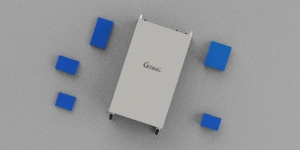
 Europe Warehouse
Europe Warehouse